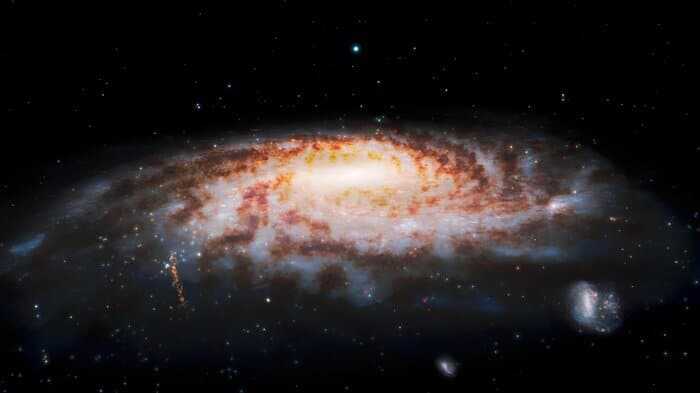The structure identified in the Milky Way contains fewer heavy elements than any other known star system in our galaxy. The discovery described in a scientific article published on Wednesday (5) in the journal nature, through the Gemini Observatory, a program of the US National Laboratory for Optical and Infrared Astronomy Research (NOIRLab).
According to observations, stars in this stream were torn from an ancient star cluster and are remnants from the early days of the Milky Way, which can provide data on how the first stars formed.
An international team of researchers, including members from the European Union, Canada and Russia, has been tasked with discovering C-19, as the stellar stream is called, which lies south of the Milky Way. Its orbit extends about 20,000 light-years from the galactic center to its nearest location and about 90,000 light-years from its farthest point.
The star system occupies an area equal to 30 full moons in the Milky Way
Scientists say the star system spans an impressive area of the night sky – about 30 times the width of the full moon – even though it is not visible to the naked eye.
Using the Gemini North Telescope, located in Hawaii, and Gemini’s remote access to the CFHT SPADES Spectrograph (GRACES) instrument, both from the Gemini Observatory, the team realized that C-19 was the remnant of a ‘globular cluster’.
It was previously believed that red globular clusters contain up to 0.2% metal, but C-19 has an unprecedented level: less than 0.05% metallic.
The finding that the weak metallic flux comes from the globular cluster has implications for the formation of stars, star clusters, and galaxies in the early universe.
In fact, the very existence of this flow suggests that globular clusters, the first building blocks of the Milky Way, must have been able to form in metal-poor environments, before successive generations fed the universe in heavy elements.
“We didn’t know if there were globular clusters with a few heavy elements in them. Some theories suggested that they could not be formed,” said Nicholas Martin, of the Strasbourg Astronomical Observatory, lead author of the study. Other theories suggest that they all died a long time ago, making this a fundamental discovery for our understanding of star formation in the early universe.”
Team members initially detected C-19 in data from the Gaia satellite using an algorithm they designed specifically for stellar flux detection. C-19 stars were also identified by the pristine survey — a search for the least metallic stars in and around the Milky Way using the telescope of Canada, France and Hawaii — as being interesting enough to warrant follow-up observations.
To determine the origin of C-19’s forming stars, astronomers needed the detailed spectra of GRACES. The team also collected data using a spectrophotometer installed at Gran Telescopio Canarias in La Palma, Canary Islands.
“GRACES has provided crucial evidence that C-19 is a discontinuous globular cluster and is not the most common discontinuous dwarf galaxies,” said Kim Finn of the University of Victoria, principal investigator of the GRACES observations. “We already knew that this was a very weak metallic flux, but defining it as a spherical mass requires the precision of metallurgical and detailed chemical abundances available only with high-resolution spectra.”
The new study also suggests that C-19 must have formed from the first generations of stars, making the mass a relic of the days when the first star groups formed.
Therefore, this discovery improves our understanding of the formation of stars and star clusters that appeared shortly after the Big Bang, and provides a natural laboratory for studying the oldest structures in galaxies.
You have watched the new videos on Youtube digital outlook? Subscribe in the channel!

“Proud thinker. Tv fanatic. Communicator. Evil student. Food junkie. Passionate coffee geek. Award-winning alcohol advocate.”


